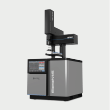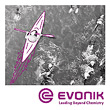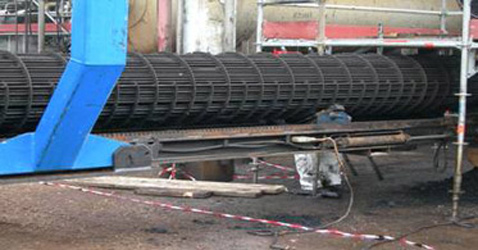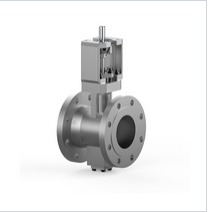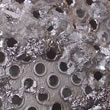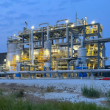Nov-2020
Adding value with catalyst testing — supporting refineries in challenging times (ERTC)
The refining industry is under enormous pressure to adapt to the global changes led by measures against climate change.
Florian Huber & Robert Henkel
hte GmbH
Viewed : 1698
Article Summary
This results in significant pressure on refining volumes and margins, and at the same time a push towards further petrochemical integration, as well as processing of cheaper opportunity feedstocks or renewable feedstocks.1
Operational excellence and optimal asset utilisation are key factors for success, focusing on core competencies and engaging external expertise outside of one’s own area of expertise. Catalytic processes will continue to play an important role in converting the bottom of the barrel, waste streams, CO2, and renewable feedstocks into high-value fuels, lubricants, and chemicals in an increasing endeavour to achieve a circular economy. Catalyst management, process optimisation, and troubleshooting are important in achieving operational excellence and optimal asset utilisation.
Catalyst testing on a laboratory scale helps to overcome the uncertainties related to how catalysts will cope with unknown or challenging feedstocks. Furthermore, operating conditions and the impact on product quality can be optimised. Utilising high throughput catalyst testing is fast and allows for a direct head-to-head comparison of different catalytic solutions under industrially relevant and case-specific conditions.
A well-designed test ultimately pays for itself by supporting technological transformation or improving operations to save costs or boost product quality and margins.2,3 Classical catalyst selection within a refinery is very often based on studies which typically lack comparability, since the information originates from different sources. This information is typically generated by individual testing or by model predictions. An independent catalytic test using actual operating conditions and the relevant industrial feedstocks can ensure a direct head-to-head comparison of different catalytic solutions and hence allows for a solid, fact-based economic evaluation. Figure 1 shows an economic assessment of how one can increase the margin for a VGO hydrocracker by choosing the optimum catalyst. Assuming a volume gain in the range of 1 to 2%, a margin uplift in the range of $5 to $10 per barrel, and a production rate of 50,000 bbl/day, an increased margin of several million dollars can be obtained over the whole cycle length. This can be accomplished just by choosing the right catalyst, i.e. the catalyst with the optimal yield structure and product quality.
In addition, it is a major benefit if a catalyst test can provide information on not only the fresh catalyst system, but also the aged system at a later stage in the cycle. High throughput accelerated ageing can assist in evaluating catalyst deactivation and its impact on product quality. A well-designed protocol is needed in order to obtain meaningful data,4,5 while the high-throughput approach facilitates the execution of the test protocol in a fast and cost-effective way. In this context, Figure 2 illustrates the use of a 24-fold high-throughput trickle-bed test unit. Here, eight catalyst systems can be tested in parallel with a configuration of two reactors in series, as required in first-stage VGO hydrocracking, for instance. By adding an ageing protocol with two different feedstocks in parallel, up to four catalyst systems can be evaluated for fresh catalyst performance and catalyst deactivation simultaneously. This comprehensive evaluation ultimately identifies the optimum fresh catalyst system for the respective industrial installation, at the same time giving an indication of whether this system also operates best throughout the cycle length. And all of this is possible within a typical test duration of one to two months.
The examples above show that the knowledge generated with independent catalyst testing is of economic benefit to refinery operations, especially in a time when the whole refining sector is undergoing transformation and only the fittest will survive. Additional challenges lie ahead with the introduction of cheap opportunity feedstocks, co-processing of waste streams and renewable feedstocks, and the transformation from crude to biorefineries. All of this is based on a solid understanding of the respective technical processes, and catalyst testing will remain an important key differentiator.
References
1 W Pfeiffer, R Berger, The Future of Refining, International Downstream Week Virtual 2020, 8—10 Sept.
2 I-T Trotus, J-C Adelbrecht, F Huber, N Pongboot, T Upienpong, PTQ Q4 2019, 79-83.
3 R Adarme, R Steinberg, E Johnson, F Huber, J Berg, S George, Hydrocarbon Engineering, Sept 2019, Vol. 24 (9), 49-52.
4 F Huber, I-T Trotus, PTQ Catalysis 2019, Vol. 24 (2), 35-39.
5 F Huber, Movers & Shakers, The Catalyst Review, July 2019, Vol. 32 (7), 18.
This short article originally appeared in the 2020 ERTC Newspaper, produced by PTQ / DigitalRefining.
You can view the digital issue here - https://online.flippingbook.com/view/1029582
Add your rating:
Current Rating: 4








